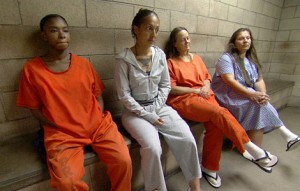Prison News
4% Recidivism Rate

The national recidivism rate for inmates over 65 is 4%. By comparison, according to the National Bureau of Statistics, About two-thirds (67.8%) of released prisoners were arrested for a new crime within 3 years, and three-quarters (76.6%) were arrested within 5 years. Within 5 years of release, 84.1% of inmates who were age 24 or younger at release were arrested for a new crime.
Despite the obvious conclusion revealed by these statistics, the percentage of elderly inmates has continued to grow each year. For example, in 2014, approximately 17 percent of New York state’s prison population was 17 percent. Within the next 15 years, it is estimated that one third of the inmates in New York will be elderly.
The cost for imprisonment of aging inmates is extremely prohibitive. The state governments, local communities, and federal government spent over $16 billion last year on imprisonment of inmates over the age of 50. The cost for incarcerating an inmate over the age of 50 is still approximately twice the cost of locking up young inmates.
Our prisons and jails were not designed for elderly inmates. Prison health care cannot accommodate the many health needs of inmates over the age of 60—and certainly not the growing inmate population over the age of 70. Elderly inmates have more complicated health issues which require expensive treatment from physicians and hospitals in the local communities
Present prison dogma is retribution and punishment (sometimes excessive) which can last decades. In the end, not only the aging inmates suffer, but so does society. The exorbitant costs for maintaining the elderly in prison drains dollars from our government budgets. Today many state governments spend more on prisons than on education. If we examine New York once more as an example of this national tragedy, New York spent approximately $20,000 on the annual education of a student and $60,000 a year for the incarceration of the average inmate. The costs for incarcerating an elderly inmate in New York exceeds $100,000 for 12 months.
Studies have shown that elderly inmates are too frail to be any risk to the public, but aging inmates are easy prey for other inmates inside the barbed wire and walls of prisons. It does not make any sense, common, fiscal, and moral to continue a policy of long term incarceration of elderly inmates who have almost a non-existent chance of recidivism.
By: Bradley Schwartz
Founder of prisonpath.com


